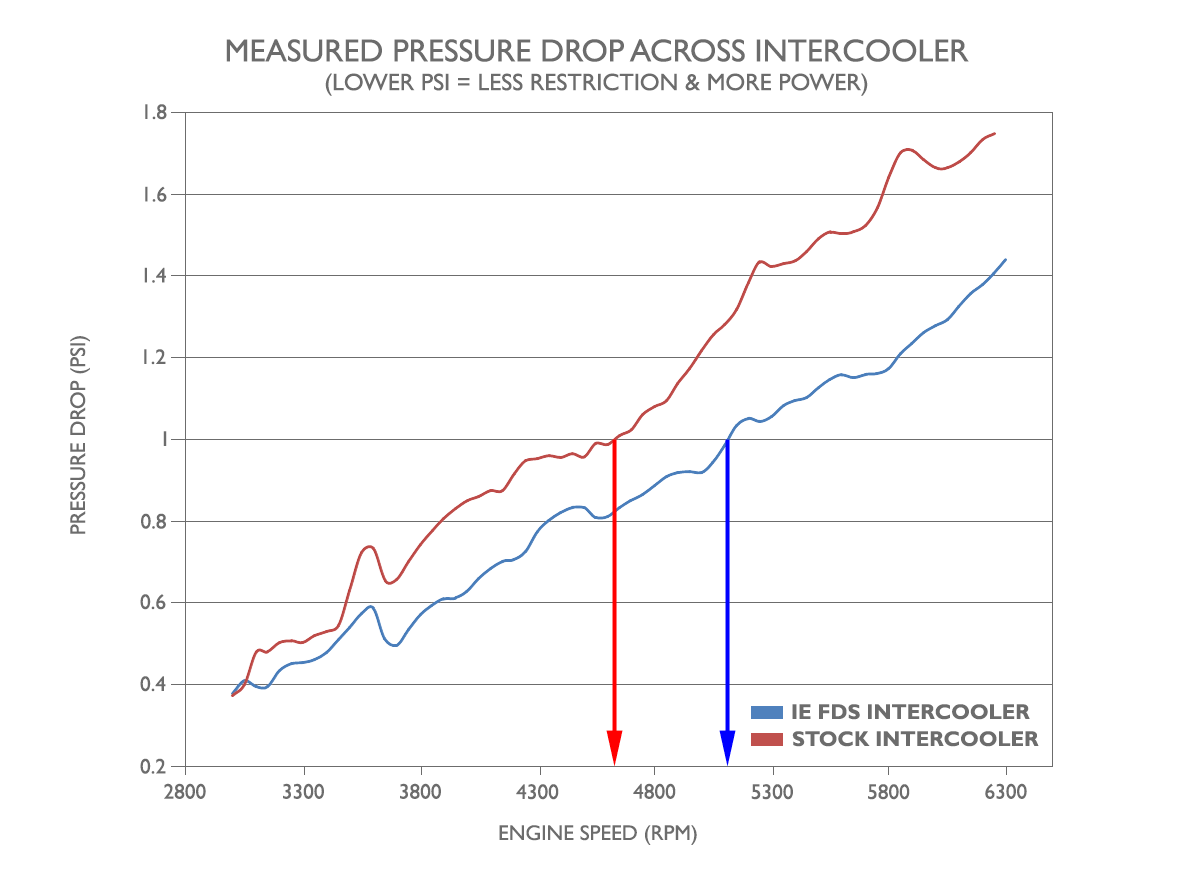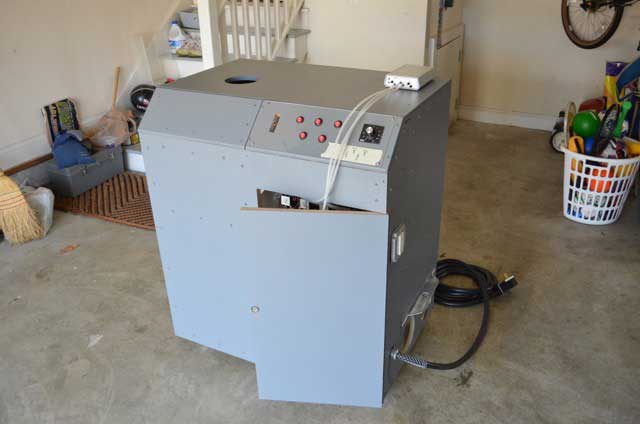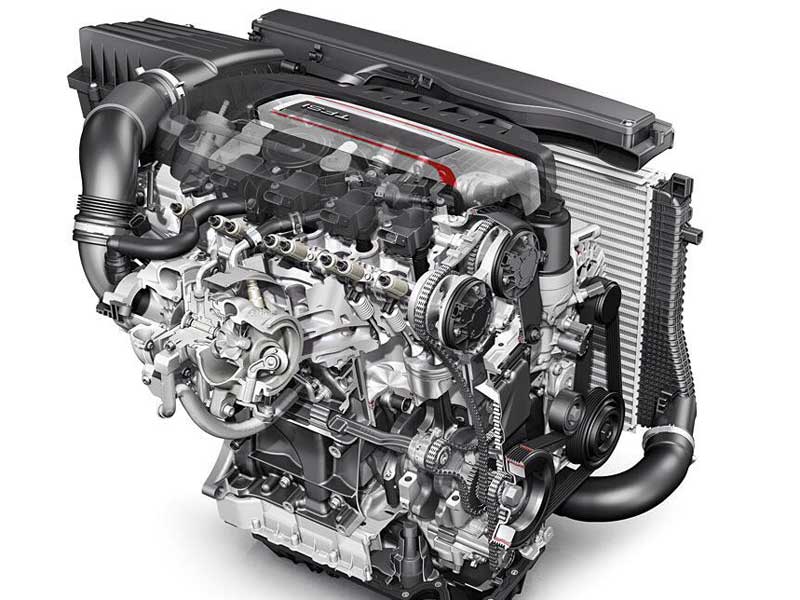Intercooler pressure drop is an interesting subject for which most products have no performance data. While density recovery via temperature drop is the main purpose for having an intercooler, aka heat exchanger, the restriction to airflow caused by the presence of the intercooler in the charge air path is not something to ignore.
Existing Data:
In preparation for measuring the pressure drop of the eBay intercoolers that are available to me I looked for some existing information to get an idea of what to expect.
So far the only product I found a pressure drop test for is the Integrated Engineering direct fit replacement for the GTI/R stock intercooler.
The results that IE obtained when comparing the Golf R intercooler to the IE IC are shown below on a chart published by IE to their website.

Assessing the Data:
What is evident immediately from this chart is that the readings were taken on a car because the pressure drop is measured versus engine speed. This has the benefit of illustrating pressure drop under what may be typical operating conditions, but makes comparing the results with other products challenging because the test conditions are unknown and may be hard to replicate even if they were known.
Commonly airflow measurements are given in terms of Cubic Feet per Minute (CFM) at a given pressure drop, normally expressed as Inches of Water when a Flow Bench is used.

The IE results are not presented in this format but it is possible estimate what the results would be at more standardized conditions.
Determining airflow at a pressure drop of 28″ of H2O is common, and 28″ of water equates to approximately 1 psi (more precisely it is 1.01 psi). The information provided by IE for each intercooler includes a data point that has a pressure drop of 1 psi.
Using 1 psi as a reference point the airflow can be estimated for each intercooler.
The Mk7 GTI/R has an engine that displaces 2 liters, and more precisely 121 cubic inches.

Knowing the engine speed at 1 psi, which is provided on IE’s chart and is approximately 4612 rpm for the stock Golf R intercooler and 5112 rpm for the IE intercooler, the airflow can be estimated.
With 121 cubic inches of displacement, at 99% VE, and an engine speed of 4612 rpm, the airflow through the engine, and thus the stock Golf R intercooler is approximately 160 CFM.
At 5112 rpm the airflow through the IE intercooler is approximately 177 CFM.
- R: 160 CFM @ 28″ of H20
- IE: 177 CFM @ 28″ of H2O
Errors:
This estimate is likely to underestimate the airflow through each intercooler. The results published by IE were most likely obtained on a dyno with the engine operating under boost pressure. An increase in air density will cause pressure drop to increase for a given volumetric flow rate.
Making the assumption that the engine was operating at 25 psi of boost and retained 99% VE a more likely estimate for airflow is:
- R: 201 CFM @ 28″ of H2O
- IE: 232 CFM @ 28″ of H2O
Sanity Check:
With no other results from a Mk7 GTI/R to compare with yet I looked to some other intercoolers that I have flow tested in the past.
- Mazdaspeed MX-5: 165 CFM @ 28″ of H2O (8.25″ x 8.5″ x 2.5″)
- Porsche GT2RS: 225 CFM @ 28″ of H2O (14″ x 9″ x 3.5″)
- Audi B5 RS4: 245 CFM @ 28″ of H2O (9″ x 7.25″ x 2.6″)
While the GTI/R specific intercoolers differ in design from these others, as all of these intercoolers do from one another, the results are in the ballpark.
